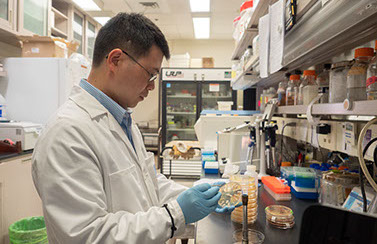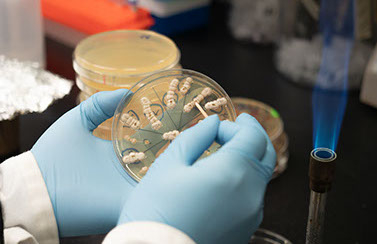THE PROBLEM
The proper function of the dynein motor is critical to human health as mutations in dynein or its regulators, such as dynactin and Lis1, are causally linked to brain developmental disorders such as lissencephaly and devastating neurodegenerative diseases such as Amyotrophic lateral sclerosis (ALS or Lou Gehrig's Disease). Military veterans are about twice as likely to develop ALS compared to the general population, although the cause of this increase in ALS risk is unclear. The U.S. Department of Veterans Affairs recognizes ALS as a service-connected disease and provides financial and medical support to members with at least 90 continuous days of military service.
- Current funding support: NIGMS/NIH.
- Previous funding support: NIGMS/NIH, NSF, American Heart Association, USU, CNRM/DoD.
"Our work on the mechanism of intracellular transport could potentially lead to the identification of drug targets for neurodegenerative diseases."
OUR APPROACH
Dr. Xiang established her lab at USU in 1999 and has been working on the mechanism of long-distance organelle transport driven by cytoplasmic dynein (or “dynein”). We use the filamentous fungus Aspergillus nidulans as a genetic model organism and combine genetic, cell biological and biochemical approaches to study how dynein activity is regulated in vivo. We routinely do genetic crosses to obtain new strains, polymerase-chain reactions (PCRs) to make DNA constructs, live cell imaging to observe fluorescence-labeled proteins and protein pull-down assays/western blots to study protein-protein interactions.


